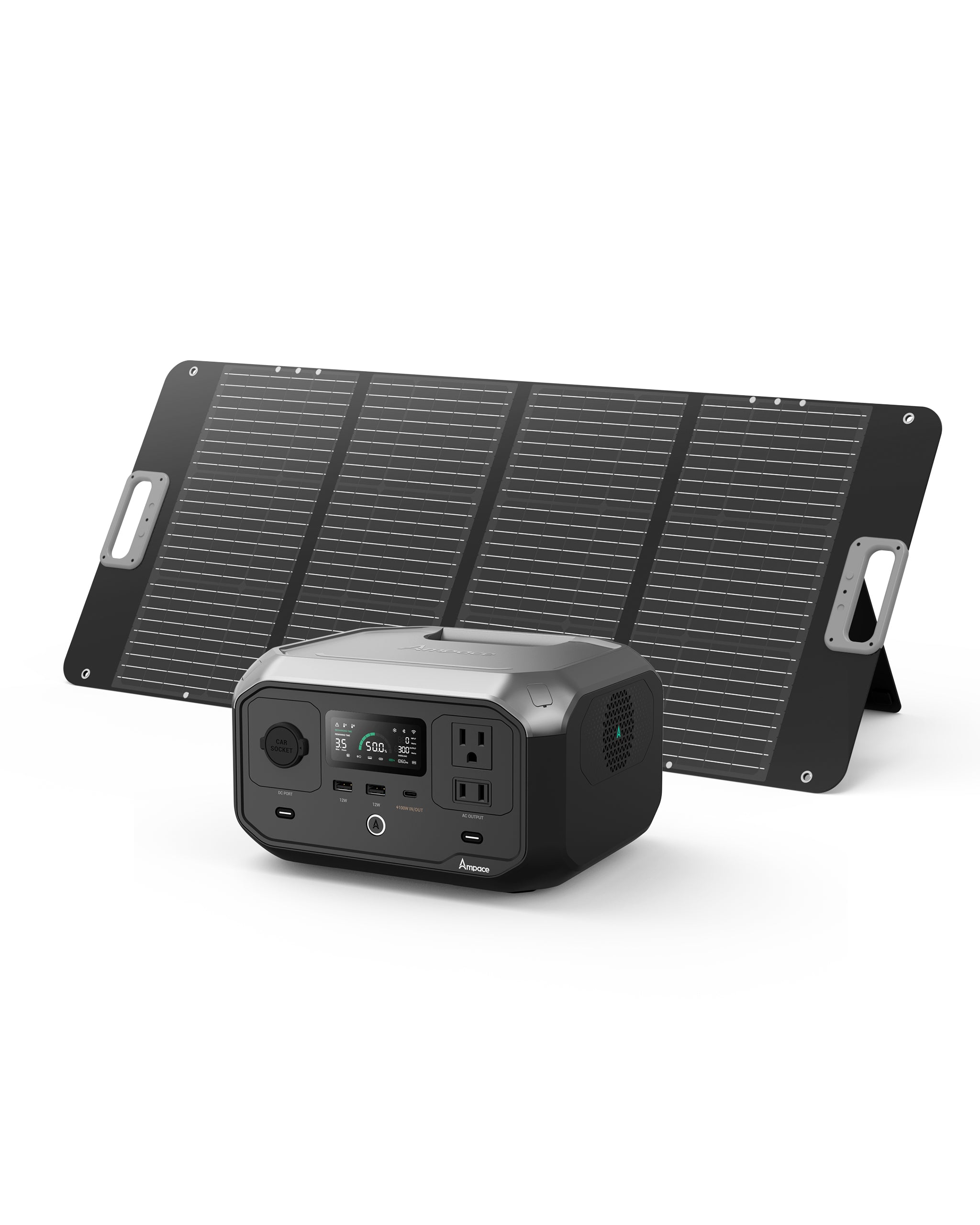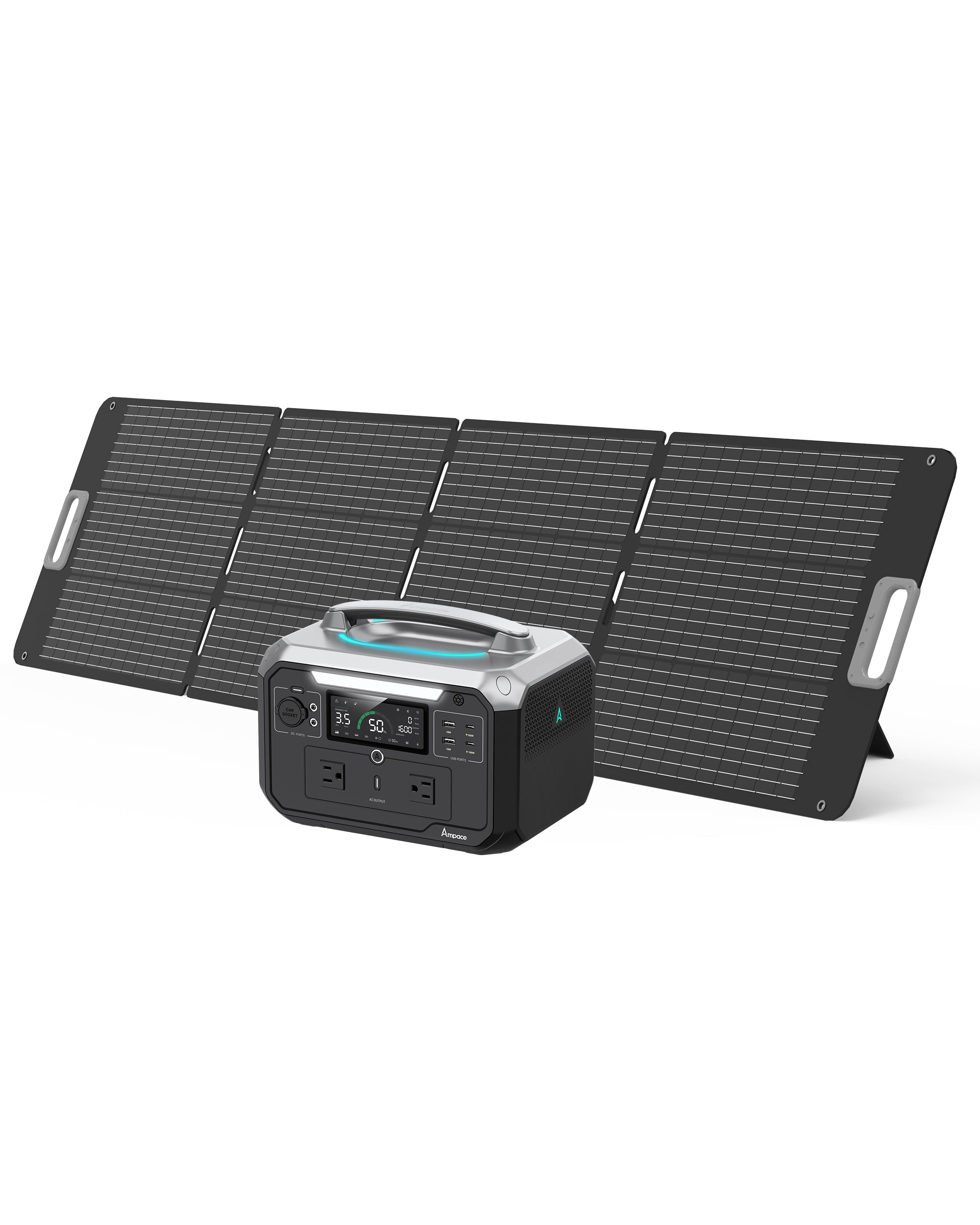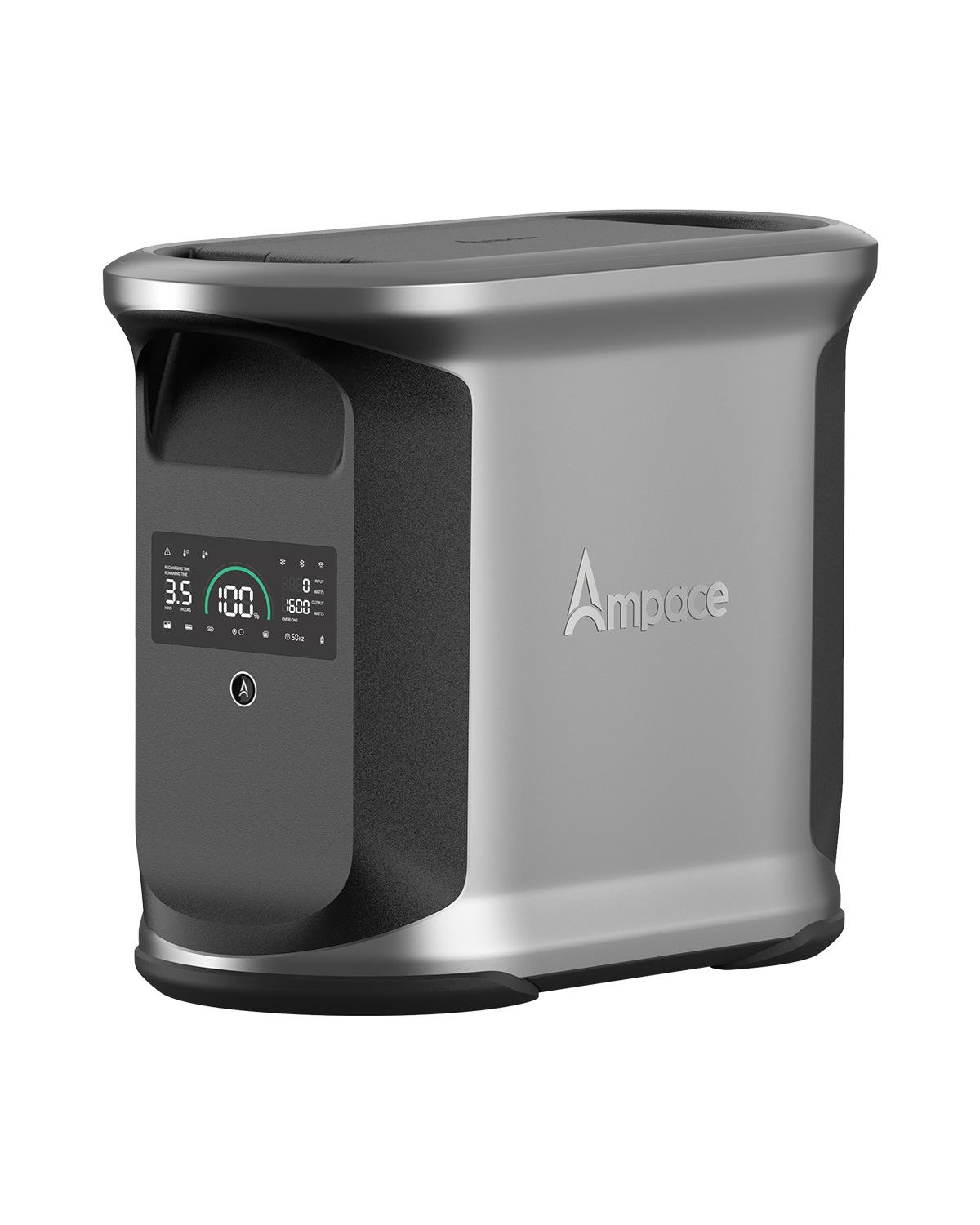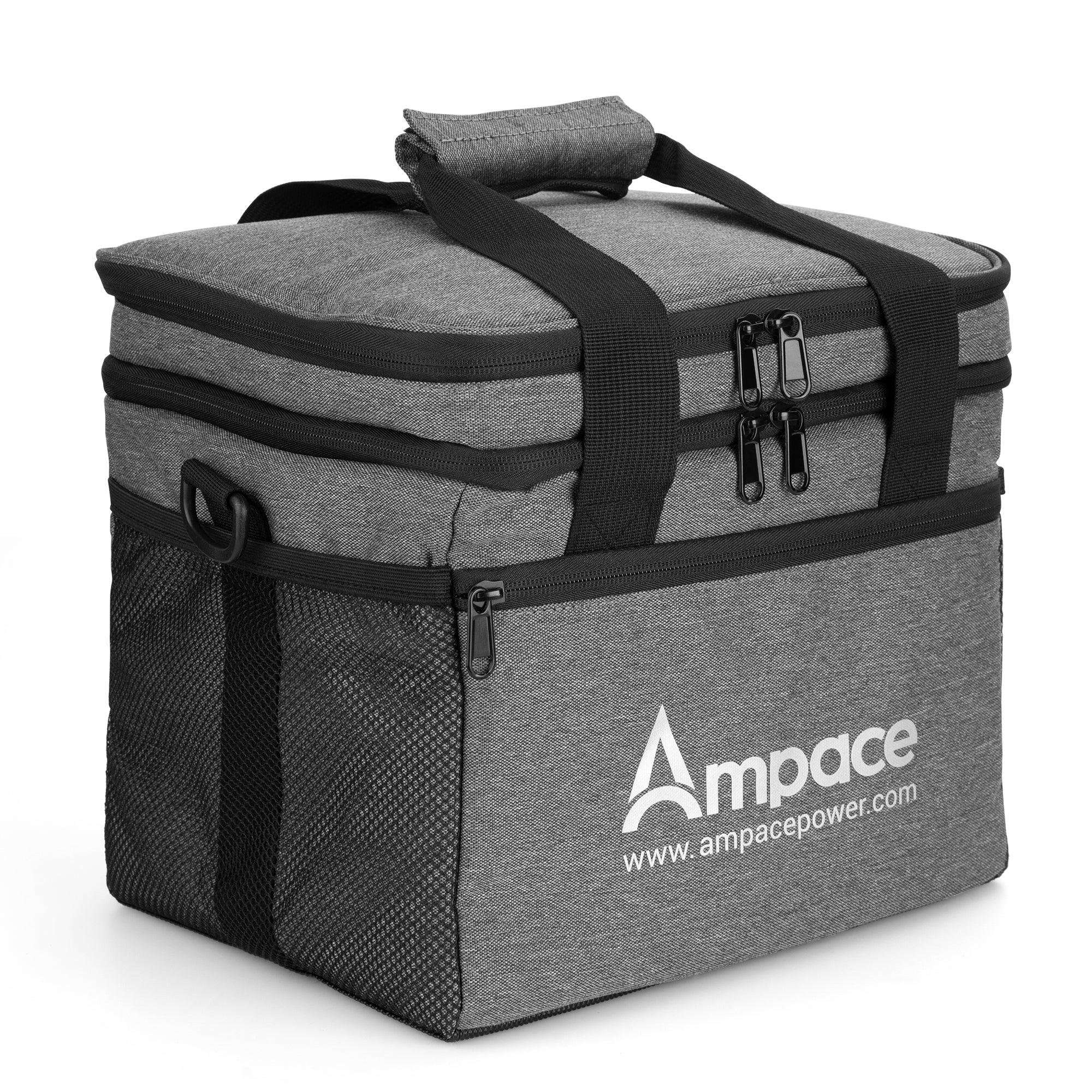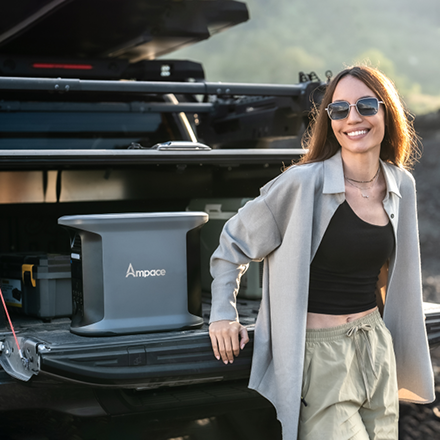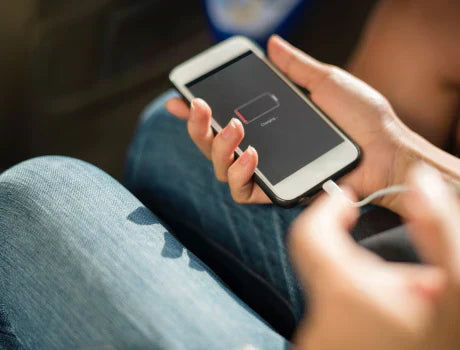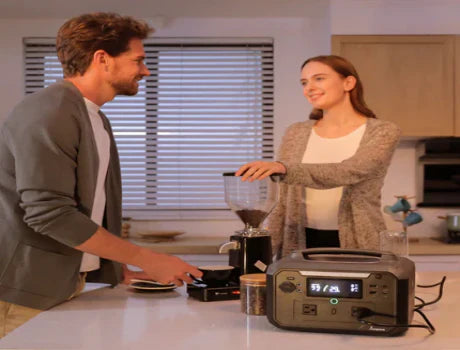A Step-by-Step Guide to Preparing for a Long-Term Power Outage

Table of Contents
- Understanding the Threat: Blackout vs. Brownout
- The Four Pillars of Preparedness: Your Home Emergency Kit Checklist
- The Power Plan: Your Modern Emergency Power Supply for Home
- Choosing the Best Solar Generator for Home Backup
- The Ampace Andes 1500: Your Family's Safety Net
- Putting Your Plan into Action
It’s a feeling we all know. The lights flicker once, twice, then plunge you into an unnerving silence. In that sudden darkness, a wave of questions hits you. How long will this last? Is the food in the fridge going to spoil? How will I keep my phone charged? For most of us, a brief outage is just an inconvenience. But with grid instability, severe weather events, and the possibility of a rolling blackout becoming more common, it’s crucial to know how to prepare for a long-term power outage.
This isn’t about panic; it’s about peace of mind. It’s about knowing that you’ve taken the right steps to keep your family safe, comfortable, and connected, no matter what’s happening outside. This guide will walk you through everything you need to do, from building a foundational emergency kit to securing a modern, reliable power source that goes far beyond a simple flashlight.
Understanding the Threat: Blackout vs. Brownout
First, let’s quickly clear up some terms. What most of us call a blackout is a total loss of power. A brownout, on the other hand, is a temporary drop in voltage. While less severe, brownouts can still damage sensitive electronics. A solid preparedness plan should account for both, and even for more extreme, though less likely, scenarios. Some forward-thinking individuals even consider
EMP protection as part of their strategy, aiming for total resilience against any potential grid-down event.

The Four Pillars of Preparedness: Your Home Emergency Kit Checklist
A truly effective plan is built on four essential pillars. Think of this as your ultimate home emergency kit checklist, covering the absolute necessities to see you through an extended outage.
Pillar 1: Water
This is your most critical supply. The standard recommendation is to store at least one gallon of water per person, per day. For a family of four, a three-day supply means 12 gallons. For a longer-term outage, you’ll want significantly more. Don’t forget to have a method for water purification, like tablets or a filter, as a backup.
Pillar 2: Food
Stock up on non-perishable foods that your family will actually eat. Canned goods, dried fruit, peanut butter, and protein bars are excellent choices. Make sure you have a manual can opener. You’ll also need a way to cook without electricity, like a camp stove or a barbecue grill—just remember to use them outdoors in a well-ventilated area.
Pillar 3: Safety & First Aid
Your kit should include a comprehensive first-aid kit, any necessary prescription medications, flashlights or headlamps with extra batteries, and a whistle to signal for help. A battery-powered or hand-crank radio is essential for receiving emergency broadcasts when the internet and cell service are down.
Pillar 4: Power
This is where modern preparedness truly separates itself from the past. In today’s world, being without power means being cut off. It means losing hundreds of dollars in spoiled food, being unable to run critical medical devices, and losing your connection to the outside world. A modern plan requires a modern emergency power supply for home.
The Power Plan: Your Modern Emergency Power Supply for Home
When you think of backup power, you might picture a noisy, gas-guzzling generator that you can’t run indoors. Thankfully, technology has come a long way. Solar generators offer a clean, quiet, and safe alternative that’s perfect for keeping your home running.
During a long-term outage, a reliable power station isn’t a luxury—it’s a necessity. It’s the tool that lets you:
-
Save your food: Knowing how to keep fridge cold without power is simple when you can just plug it in. A good power station can run a standard refrigerator for hours, saving your groceries and your budget.
-
Stay healthy: For those who rely on medical devices like a CPAP machine, uninterrupted power is non-negotiable.
-
Prevent disaster: In a storm, powering a sump pump can be the one thing that saves your basement from flooding.
-
Remain connected: Keep phones, laptops, and your Wi-Fi router powered up to stay in touch with loved ones and receive critical updates.
Choosing the Best Solar Generator for Home Backup
So, what should you look for in the best solar generator for home backup? It comes down to a few key factors:
-
Capacity (Wh): Measured in watt-hours, this tells you how much energy the battery can store. For home backup, you’ll want a unit with significant capacity to run essential appliances.
-
Output (W): This is how much power the station can deliver at once. You need enough wattage to handle not just the running power of your appliances, but also the initial "surge" of power they need to start up.
-
Battery Type (LiFePO4): Lithium Iron Phosphate (LiFePO4) is the gold standard for safety and longevity. These batteries can last for thousands of charge cycles, giving you a reliable power source for a decade or more.
-
UPS Functionality: An Uninterruptible Power Supply (UPS) is a game-changer. It means the power station can detect an outage and switch over to battery power in milliseconds, so your sensitive electronics and medical devices don’t even flicker.
-
Charging Options: The best units can be recharged quickly from a wall outlet before a storm hits, but also have solar charging capability to provide potentially endless power during a multi-day outage.

The Ampace Andes 1500: Your Family's Safety Net
When you look at all the critical features, one unit stands out: the Ampace Andes 1500. It’s not just a power station; it’s a complete home resilience strategy.
With a massive 1462Wh capacity and a powerful 2400W output (3600W surge), the Andes 1500 is engineered to handle 99% of household appliances. It uses an advanced, EV-grade.
LiFePO4 battery designed for over 6,000 cycles—that’s more than 10 years of daily use.
Here’s what to do during a power outage with the Andes 1500 on your side:
-
Keep Your Kitchen Running: Don’t worry about your food. As one user in north Texas shared after a recent storm, "The unit charges very quickly, and kept our fridge, chest freezer, fans, and TV running during the entire 2 day outage by using some solar panels to charge the unit".
-
Power Critical Medical Equipment: The Andes 1500 features a lightning-fast <20ms UPS switchover, ensuring that life sustaining equipment like CPAP machines never miss a beat.
-
Stay Safe and Comfortable: It operates at a whisper-quiet 30dB, so you can run it indoors without the noise or dangerous fumes of a gas generator.11 It’s powerful enough to run fans, lights, your router, and even a coffee maker to bring a little normalcy to a stressful situation.
-
Recharge with the Sun: When the outage stretches on, you’re not helpless. The Andes 1500 can be fully recharged with solar panels, giving you a sustainable source of off-grid power. And if you have a chance to prepare, it recharges from a wall outlet in an incredible
55 minutes.

Putting Your Plan into Action
Feeling prepared is feeling empowered. You don’t have to be overwhelmed. Just follow these simple steps.
-
Build Your Kit: Go through the four pillars and gather your essential supplies of water, food, and safety equipment.
-
Secure Your Power: An outage is not the time to discover your power solution is inadequate. Investing in a reliable, powerful solar generator like the Ampace Andes 1500 is an investment in your family’s safety.
-
Practice Your Plan: Don’t wait for an emergency. Do a dry run. Unplug your fridge and see how to connect it to the power station. Make sure everyone in the family knows the plan.
-
Stay Informed: Have a battery-powered radio and know your local emergency alert channels.
A long-term power outage can be a daunting event, but it doesn’t have to be a catastrophe. With a solid plan and the right tools, you can face it with confidence, knowing you’ve done everything you can to keep your home and your loved ones secure.





